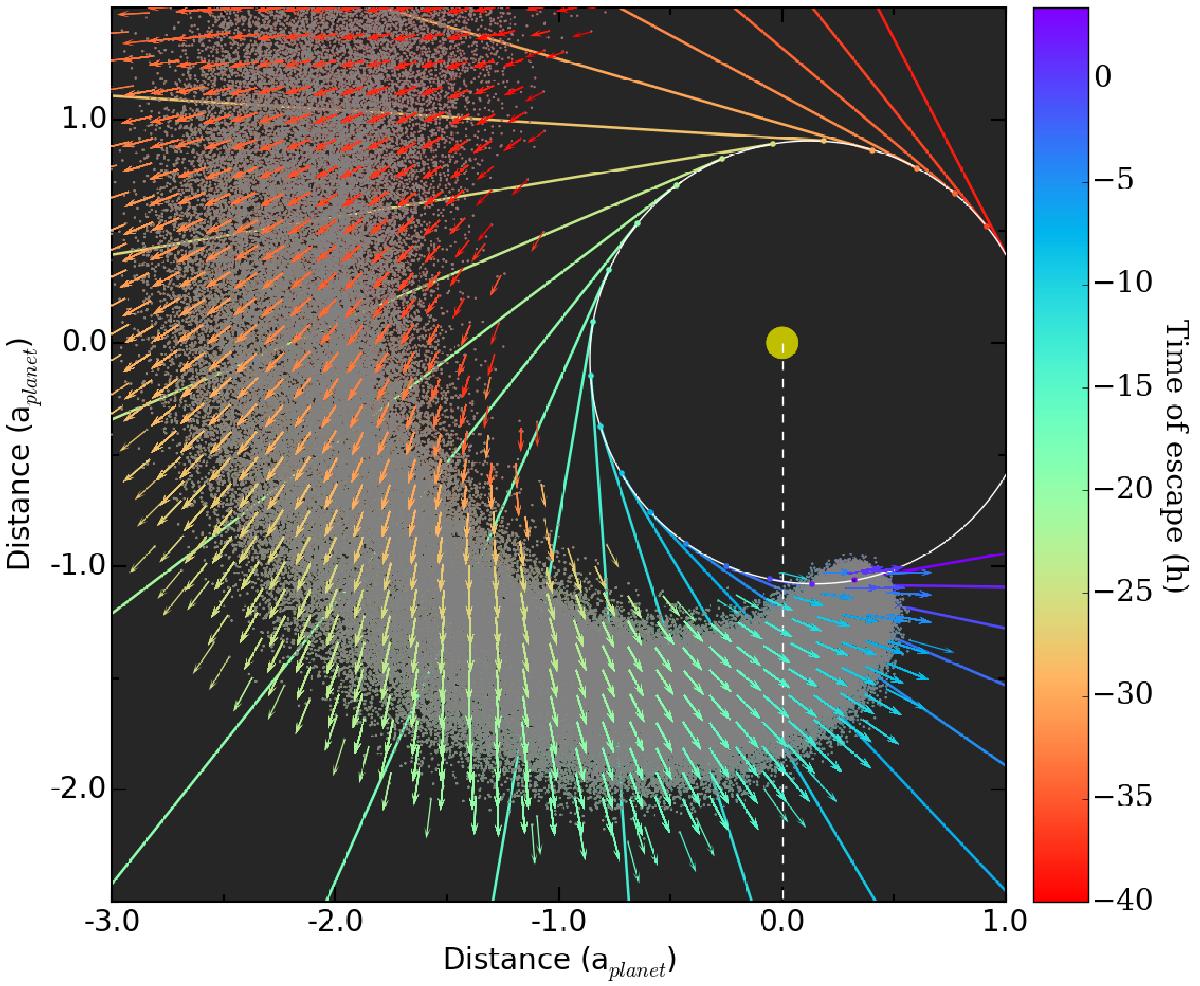Fig. 3

View of GJ 436 b exosphere (gray dots) from the perpendicular to the orbital plane, 3.5 h after the optical transit. The white dashed line shows the LOS toward Earth. Arrows display the velocity field of the hydrogen atoms with respect to the star, colored as a function of the time they escaped the atmosphere (counted from the center of the optical transit). In the reduced gravity field from the star, particles move beyond the orbit of the planet. However, radiation pressure does not overcome stellar gravity, and particles are still deviated from the tangent to the orbit at the time of their escape (solid colored lines). Because radiation pressure is velocity-dependent, the particles do not stay on Keplerian orbits. To better illustrate the effect of radiative braking, this simulation was performed with a low ionization rate artificially lengthening the exospheric tail.
Current usage metrics show cumulative count of Article Views (full-text article views including HTML views, PDF and ePub downloads, according to the available data) and Abstracts Views on Vision4Press platform.
Data correspond to usage on the plateform after 2015. The current usage metrics is available 48-96 hours after online publication and is updated daily on week days.
Initial download of the metrics may take a while.


